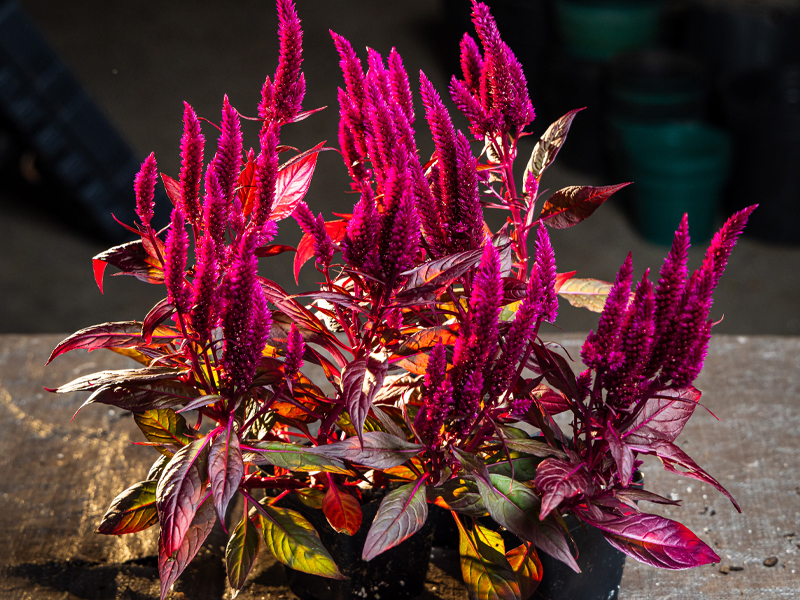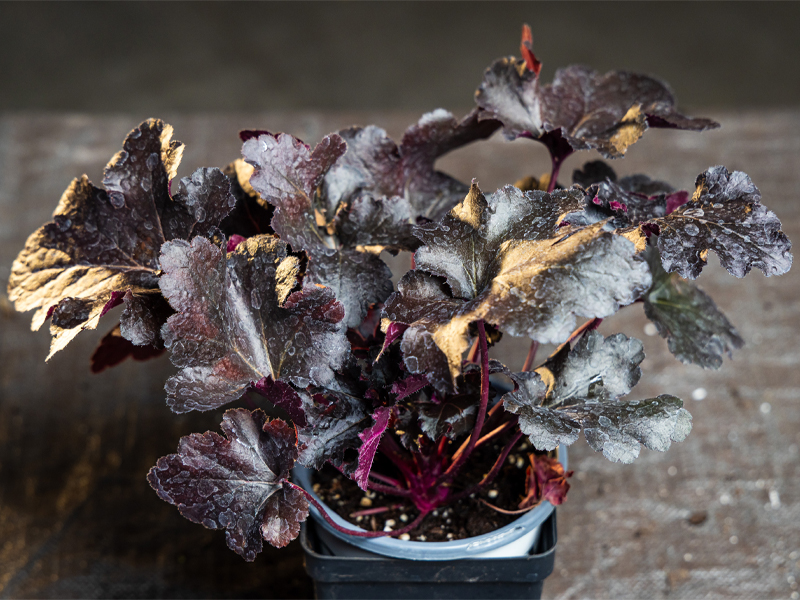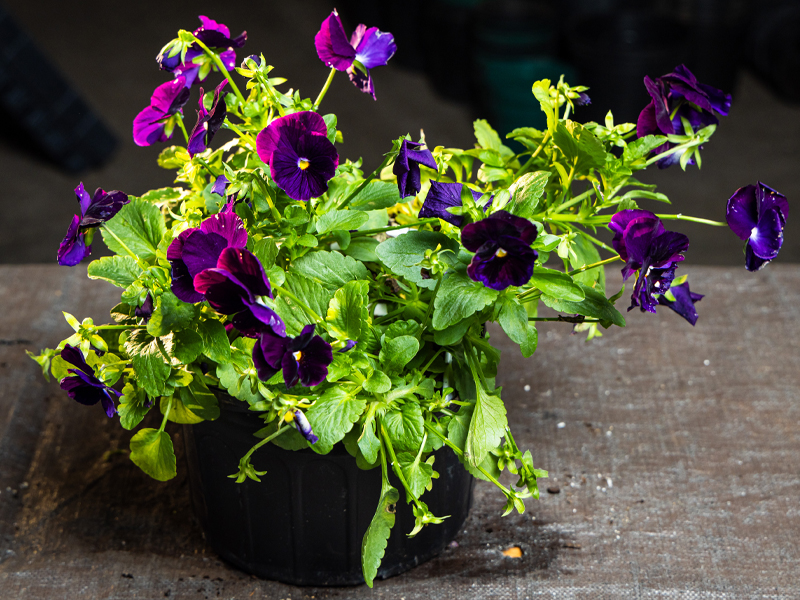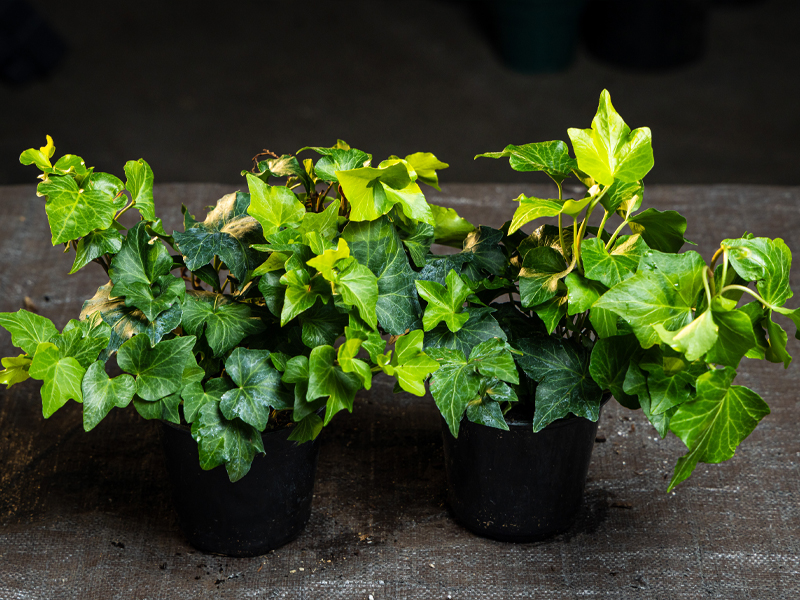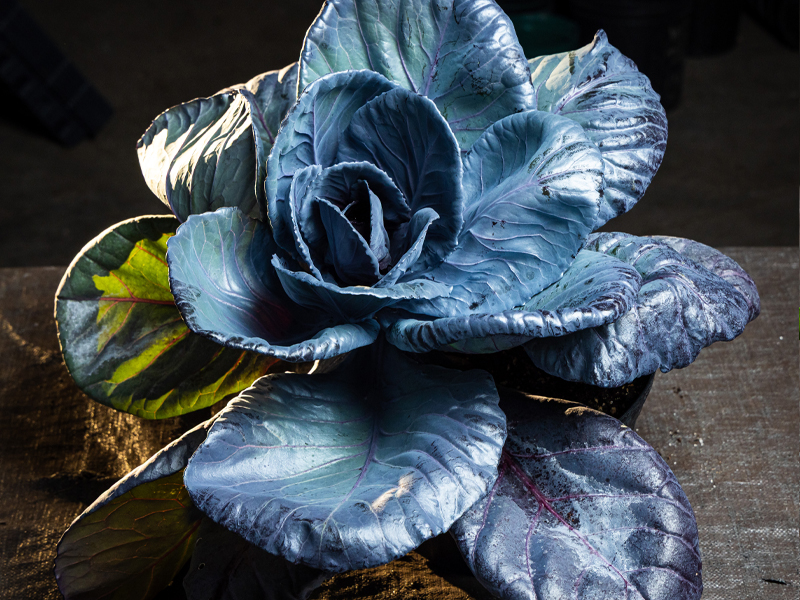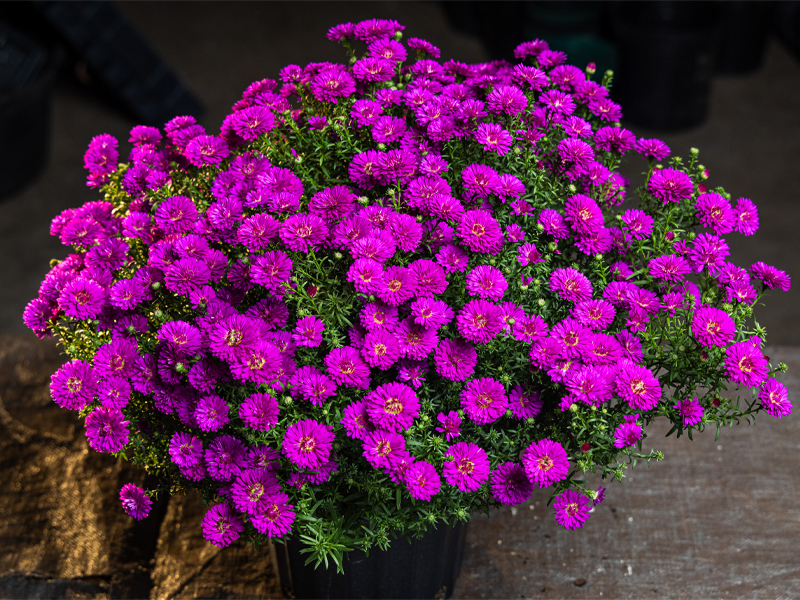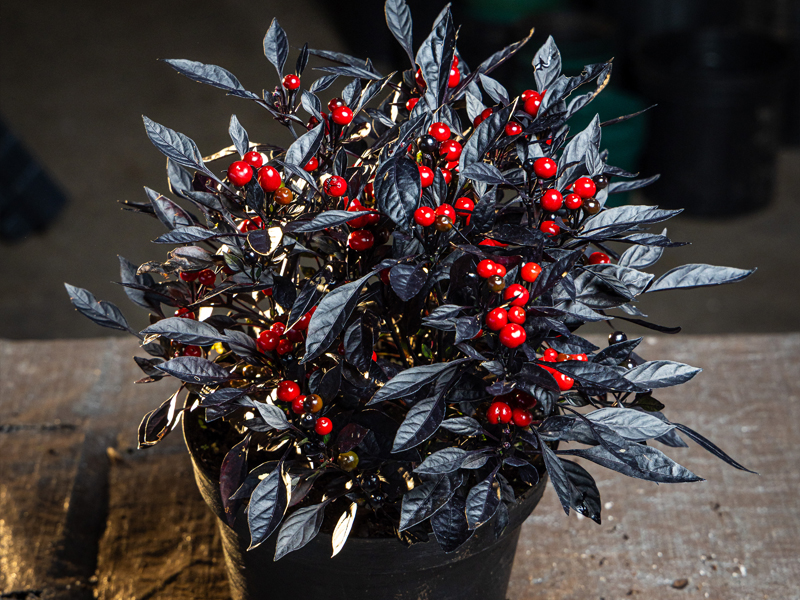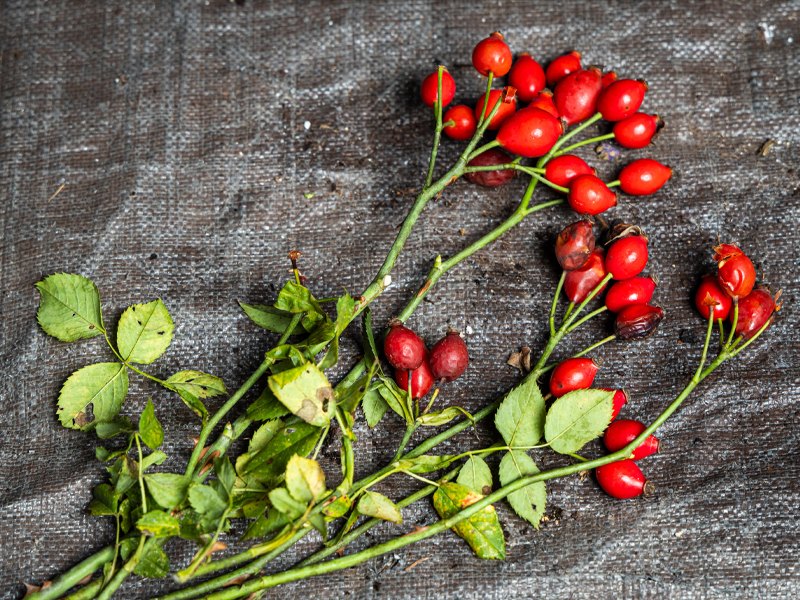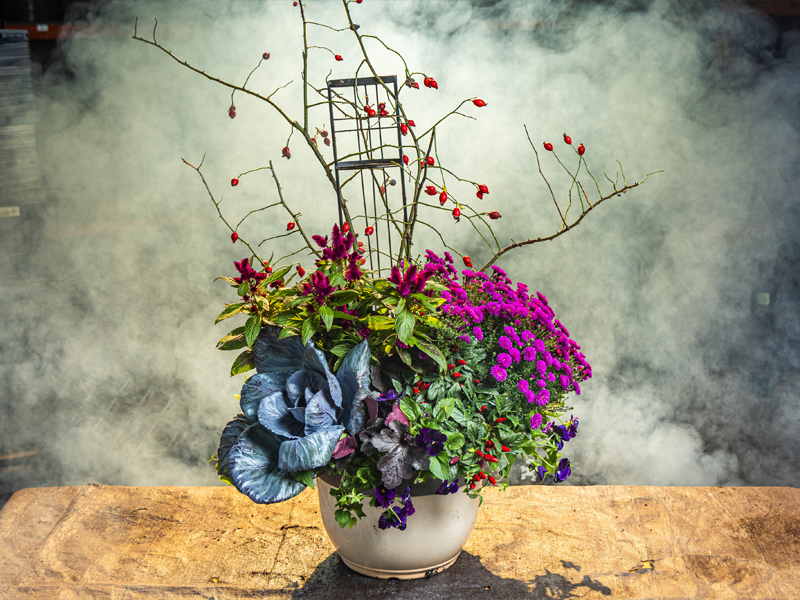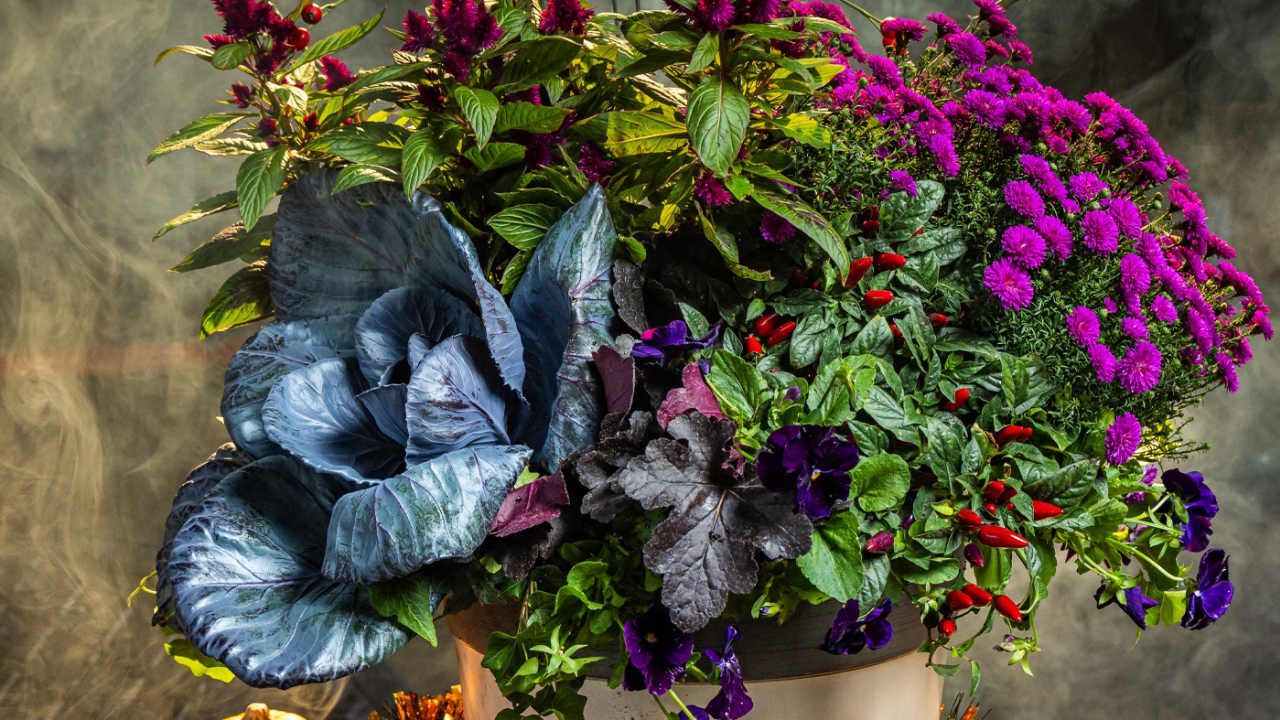

Go goth, in a pot
No, we’re not talking about a witches’ brew; we’re talking about fall container gardening. This month, we met up with Jess Goehler, curator, Plant Collections, to create a wickedly beautiful piece of goth plant art. We hope her creation inspires you to add a goth gardening container of your own this Halloween.
Goth gardening (drawn from Victorian or Gothic gardening) is having more than a moment; it’s been all the rage for years. In 2024, it was dubbed one of gardening’s trendiest topics as gardeners, new and experienced, implemented dark, moody containers, sections of their space, or entire gardens.
The appeal is in the creativity:
Goth gardening features dark, dramatic-looking plants, but it also embraces mess, a wilder look, decay (no need to get rid of every dead flower or branch), found objects, and architectural elements like statues. A goth garden or container isn’t supposed to be perfect: The point is to step outside the box—to play with personality and aesthetic. It’s a great option for beginners who want to explore the possibilities of gardening without pressure to do it “the right way.”
Want to get your hands dirty? Below are plants Jess recommends for your goth gardening container; you should be able to find them, or similar varieties, at Chicago-area gardening centers this time of year.
Scroll down for Jess’s own frightfully fun creation.
Water your container every two to three days, depending on dryness:
Check about 1 inch below the soil level to see if the soil feels dry, and if it does, it’s time to water. Containers in full sun, and containers you’ve filled to the brim with plants (who could blame you), will also dry out faster. With proper care, a container using these plants can last up to a few months—carrying you through fall until it’s time for another adventure: your winter containers.


